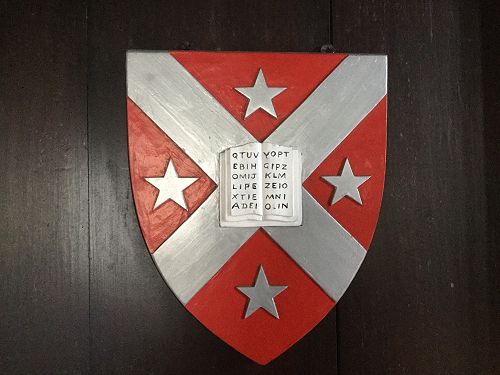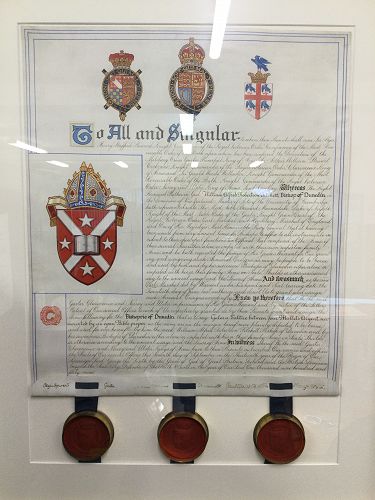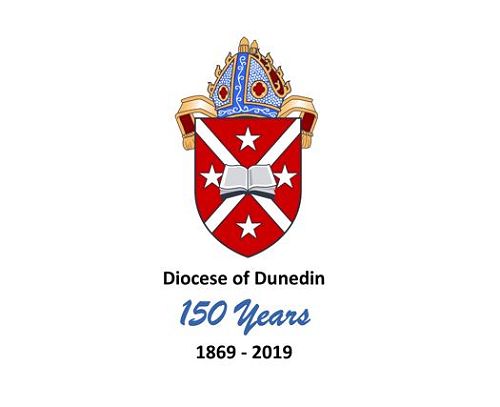
The Diocese of Dunedin Crest
You will be familiar with the crest for the Diocese of Dunedin, but who designed it and how did it come about?
We were originally asked this from an interesting source. Rev’d Liz Greville JP, Mihana Awhina/Missioner for Te Hui Amorangi ki te Upoko o te Ika (north of Wellington) requested a high resolution copy of our crest, and if we knew anything about its history and how it came about. She writes:
I am developing a work about the establishing of the Anglican Dioceses and Amorangi in Aotearoa NZ. One part of the learning will be a timeline with the crests on it and relate to other components currently being worked on as part of our NZ church history unit.
So, with a little bit of sleuthing, we have since discovered the following information:
- When the Diocese was formed on 1 January 1869 (formerly it came under the Anglican Diocese of Christchurch), originally the private seal Bishop Tarrat Nevill was used.
- Lindy Nevill has unearthed a letter by Canon E.R. Nevill (a nephew of Bishop Nevill) written in 1931 and now held at the Hocken Library (attached below) which gives the most history of the seal-crest that we have seen to date. It appears that the crest is a combination of one that Bishop Nevill used and an original designed by Bishop Jenner (never sanctioned by the Diocese but entered in the Crockfords Clerical Directory - the official diary of the Church of England). This letter mentions that the stars refer to the Southern Cross (Jenner) or four stars that were also part of Bishop Nevill's seal. The Crockford's Directory of 1930 placed the Bible in the centre, but removed the Nevill arms, and was noted as the private Sigillum of the Bishop. The final version we have has the Bishop's Mitre, but no words that refer to any particular Bishop - in essence we have ended up with a Diocesan Seal and Crest that represents the Diocese of Dunedin.
- Michael Godfrey (former Diocesan Ministry Educator) found the following when looking through Synod books: The Report to the Synod of 1921 notes "The Bishop and the Diocesan Secretary were authorised to procure a Seal for the Diocese" [Synod papers 1921, p. 36.]. He is currently looking through other Synod proceedings from the 1930's to see what else will come to light.
- We have also found reference to commissioning of the seal in 15 October 1931 in papers past, as reported in an Otago Daily Times (page 6) newspaper account of what went on in Synod. It also reported that Canon Nevill (see above) was asked to compile a history of the seal to date.
- The office has a copy of an official certificate (attached) that was issued in 1949 to Bishop Fitchett confirming our crest.
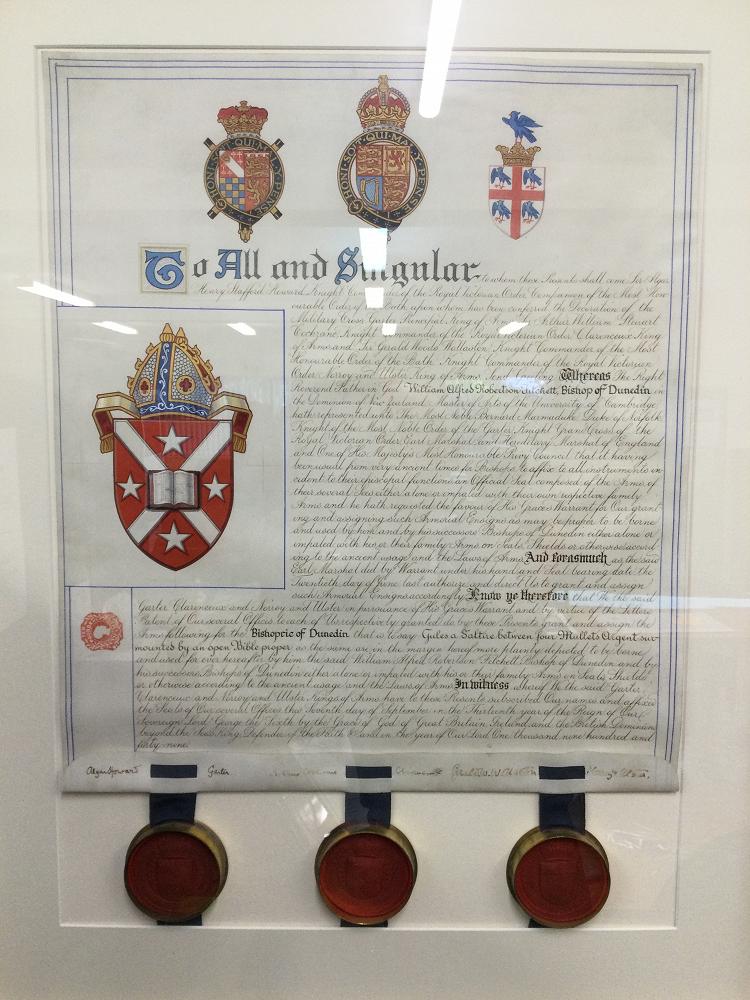
- The certificate we hold at Peter Mann House says it is a “Gules, a Saltire between four Mullets Argent surrounded by an open Bible”. Gules is a darker shade of red, mullet means a straight sided star with "argent" being the white border to the star. The Saltire refers to the Saint Andrew's Cross or the crux decussata, a heraldic symbol in the form of a diagonal cross. The word comes from the Middle French sautoir, Medieval Latin saltatorial... and the Bible is self explanatory!

It has been brought to our attention that the entry on the Diocese in Wikipedia at https://en.wikipedia.org/wiki/Anglican_Diocese_of_Dunedin as of February 2023 appears to have a stylised version of the Diocesan Crest that was sourced from the NZ Anglican Church Clerical Directory 2005/2006 edition Clerical Directory header. We are in the process of giving them some feedback about this.
At times we have released slightly different versions of our logo, for example the one for our 150th year (see below). To date, the actual logo we are using is the electronic one at the head of the page, which was released in May 2017.
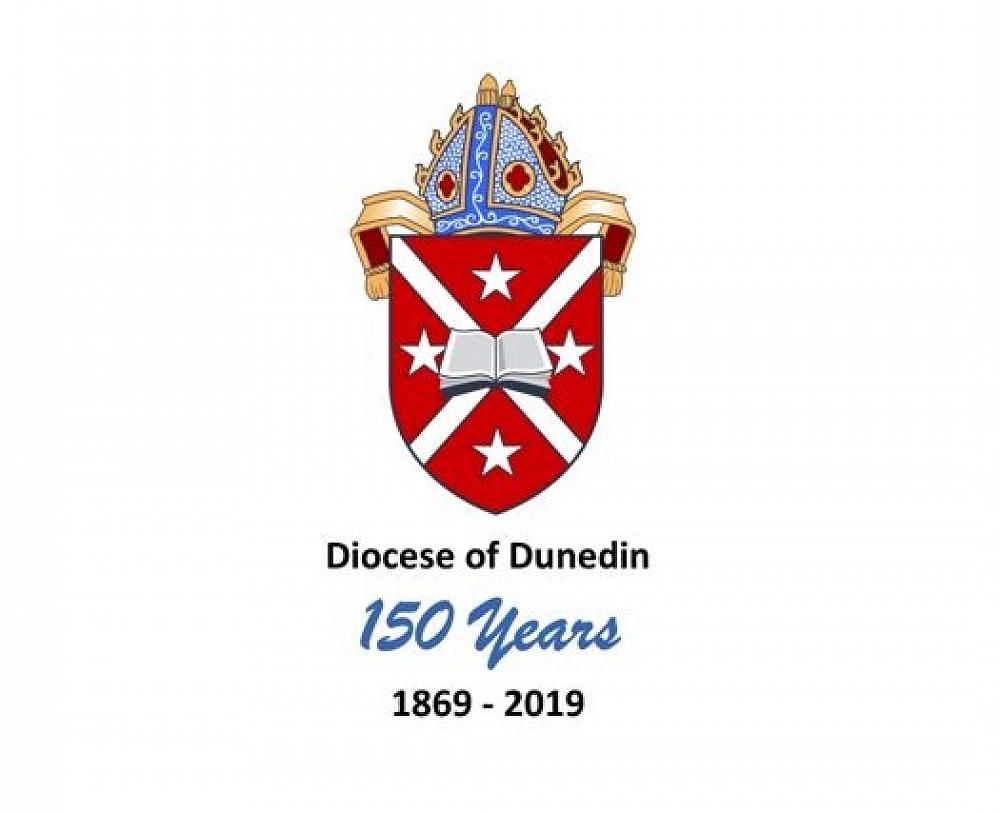
Gallery
